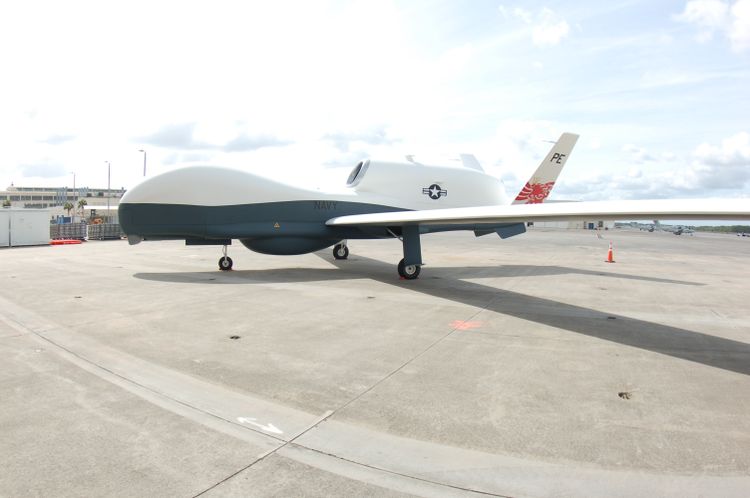
Northrop Grumman has announced that new software for the US Navy’s MQ-4C Triton long-range patrol drone has passed a key flight test. The Triton is an upgraded maritime patrol version of Northrop Grumman’s Global Hawk, and it’s now on track for initial deployment by the Navy next year. The new software upgrade is a step toward tackling a problem that had grounded Northrop Grumman’s program to provide long-range drones to Germany—and it has wider implications for autonomous aircraft of all sorts.
The new software includes a feature called the Traffic Alert and Collision Avoidance System (TCAS)—a capability that provides the remote operator of the aircraft with awareness of other aircraft operating nearby independent from air traffic control data. This proactively allows drone pilots to avoid other aircraft and prevent potential collisions. Earlier versions of the Global Hawk (including the Euro Hawk built for Germany) did not include this type of technology, and as a result those devices were not allowed to operate in the same airspace as civil air traffic in the US and Europe. With the new tweaks, Germany now plans to buy the Triton.
Additionally, the software upgrades now allow a single operator to control multiple Triton drones and provide modes for operating the Triton’s Multi-Function Active Sensor radar. The Triton, which has a range of 8,200 nautical miles (about 9,400 miles, or 15,000 kilometers), is intended to perform long-range ocean and coastal intelligence collection, including tracking and identification of ships. Flying for more than 24 hours at a time, the Triton will be capable of observing over a million square miles of ocean during a flight.
TCAS integration is an important step for autonomous drones becoming more useable in US airspace. TCAS and the GPS-based automatic dependent surveillance-broadcast (ADS-B) system could allow drones to be seen by other aircraft without the involvement of air traffic controllers (vice versa, it also lets drone operators have more awareness of aircraft near their drones). Ultimately, such tweaks greatly ease the dependence on centralized air traffic control. And this may provide a way to get past the current requirement for drones to operate within visual sight of the operator and for drones to move into more long-range commercial roles.
[“Source-arstechnica”]










